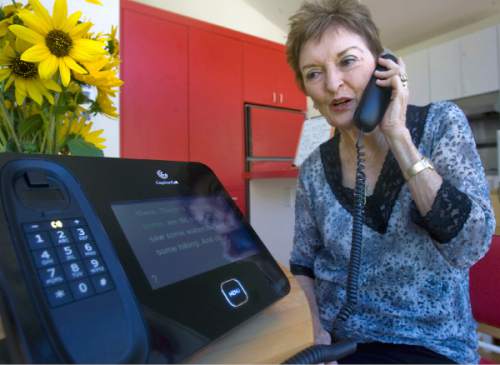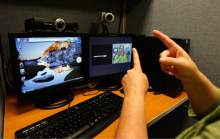This is an archived article that was published on sltrib.com in 2016, and information in the article may be outdated. It is provided only for personal research purposes and may not be reprinted.
No, they're not the telemarketers soliciting you in the middle of dinner or the people you call for customer-service support when your remote control doesn't work.
"Telephone operators," according to federal data, are workers who offer telephone assistance to the disabled or to those in emergencies, along with employees who operate switchboards. These are the most overrepresented workers in Utah.
The Bureau of Labor Statistics measured the most overrepresented jobs in each U.S. region by comparing the number of people in a profession in one area to the tally in that field nationwide. This ratio, called the "location quotient," was calculated for jobs with at least 1,000 employees based on May 2015 data. For telephone operators in Utah, the quotient is a startling 13.95, meaning there are nearly 14 times as many telephone operators in Utah as in the country as a whole.
So why is the Beehive State abuzz with these obscure telephone operators?
Carrie Mayne, chief economist with the Utah Department of Workforce Services, explains that most of the state's telephone operators work in the "translation and interpretive-services industry" — in short, they help translate phone messages for the hard of hearing.
That industry has been growing here since at least 2004, according to Workforce Services data, when there were 23 Utah establishments offering translation services.
As of 2015, there were 65. Some of the businesses are caption call centers, which hire speedy typists to translate live phone calls for the hard of hearing. Other outfits operate "video-relay services" with American Sign Language interpreters who video-chat with the deaf to sign phone conversations for them.
Utah-based Sorenson Communications performs both services. The wealthy Sorenson family, which made most of its money off of medical inventions, established the idea of video-relay services for the deaf by applying the technology that James Lee Sorenson helped develop: video-chatting technology for Apple. The company has expanded far beyond its original Utah office: It now houses 107 interpreting centers nationwide, with several thousand employees, and boasts more sign-language interpreters than anywhere else in the U.S.
It helps that Utah is a major draw of ASL interpreters. The state has seen a steady rise in the number of certified interpreters, says Mitchell Jensen, director of certification for the Utah Interpreter Program. There are nearly 450 in the state and, during the past year, Jensen has noticed a spike in the numbers taking the certification test.
One reason for the high number of Utah interpreters is Mormon missions to deaf communities. Chris Wakeland, vice president of interpreting for Sorenson Communications, served as such a proselytizer for two years, an experience that prompted him to pursue a formal education as an ASL translator.
"There is a high prevalence of people who finish their LDS mission with the deaf and have jobs ready-made for them," he says.
Another reason: government's continued support of the deaf. Utah has long encouraged students to study ASL. Since legislation passed in 1994, the state has considered ASL a foreign language. ASL is offered in high schools in Ogden, Salt Lake City, Provo and elsewhere for foreign-language credit, as well as at a plethora of universities, including the University of Utah, Utah State University, Utah Valley University and Brigham Young University.
"When we have [translators] from other states come to Utah, their jaws drop at how supportive the legislators have been in funding and supporting the needs of the deaf," Wakeland says. "I do not think we could have started Sorenson Communications elsewhere."
Though foreign language enrollments are slipping on college campuses nationwide, ASL enrollment is rising.
The Modern Language Association reported in 2015 that ASL enrollment has jumped 19 percent in four years. USU alone has more than 500 students taking ASL classes and recently has added two ASL minors — one in ASL as a foreign language and another for an ASL teaching minor.
ASL jobs can be desirable because of their flexible work hours and high pay, which averages around $38 an hour. This can be an advantage for anyone looking for part-time work, including stay-at-home moms. The translator industry is about 85 percent women.
Some more overrepresented Utah jobs: "Mine shuttle car operators" have the state's second-highest location quotient. For Salt Lake City, "metal refining service operators and tenders" claim the top spot, with the second place prize going to "reservation and transportation ticket agents and travel clerks."





